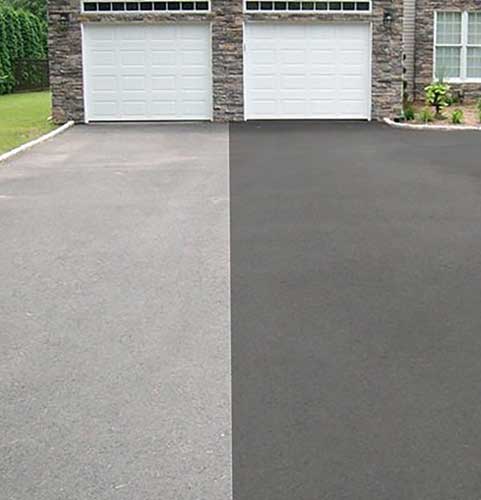Cold Mix Asphalt Vs. Hot Mix Asphalt: Which Is Right for You?

Make-up Differences
Cold mix asphalt is produced by emulsifying the asphalt binder with water and an emulsifying agent before mixing it with aggregate. The hot mix asphalt production procedure includes heating the aggregate and asphalt binder individually before combining them at the asphalt plant.
Moreover, cool mix asphalt has a tendency to be less dense and a lot more versatile than warm mix asphalt. This adaptability makes it better fit for areas with higher degrees of movement, such as driveways or roads with rush hour. On the other hand, hot mix asphalt is known for its high resilience and resistance to rutting and cracking, making it a preferred option for freeways and high-traffic roadways where longevity is critical.
Setup Refine Variations
The procedure of setting up chilly mix and hot mix asphalt shows significant differences in their needs and procedures. In comparison, warm mix asphalt requires an extra sophisticated installment procedure. Due to the heating needs, warm mix asphalt installments are typically carried out by experts with specific tools, making certain a more irreversible and structurally sound result.
Toughness and Longevity Elements
When thinking about asphalt choices, longevity and long life are essential factors to assess for lasting sidewalk efficiency,. Hot mix asphalt (HMA) is recognized for its exceptional resilience and durability. The heats during the blending and laying process enable much better compaction, causing a denser and stronger pavement structure. This leads to HMA being more resistant to hefty web traffic loads, extreme climate problems, and the effects of aging compared to chilly mix asphalt (CMA)
In regards to longevity, HMA commonly outshines CMA because of its premium strength and resistance residential properties. HMA sidewalks have a longer life span, requiring much less frequent repairs and maintenance, which can equate to cost savings in the future. Furthermore, HMA pavements are a lot more easily adjustable to meet certain task demands, better enhancing their durability.
Expense Factors To Consider
Thinking about the economic implications is a critical aspect when examining the selection between hot mix asphalt (HMA) and cool mix asphalt (CMA) for pavement projects. While the preliminary price of hot mix asphalt is normally greater than that of cold mix asphalt, HMA commonly gives a more economical remedy over time because of its remarkable durability and longevity. HMA is understood for its capability to hold up against heavy traffic tons and extreme weather conditions, decreasing the demand for frequent repair work and maintenance. On the various other hand, chilly mix asphalt is a lot more budget-friendly in advance however might call for even more frequent patching and resurfacing, leading to greater maintenance expenses gradually.
In enhancement to product costs, it's essential to think about the expenses connected with installment and maintenance when comparing HMA and CMA. Eventually, the choice between HMA and CMA must take right into account not just the preliminary price but likewise the lasting financial ramifications to determine the most economical alternative for the particular sidewalk task.
Environmental Impact Comparison
Contrast of the ecological impacts between warm mix asphalt (HMA) and cool mix asphalt (CMA) reveals unique distinctions in sustainability techniques. HMA manufacturing requires heats, bring about Related Site increased energy usage and greenhouse gas exhausts. The procedure also releases unstable natural substances (VOCs) and hazardous air pollutants (HAPs) into the environment. In comparison, CMA is produced and applied at lower temperature levels, lowering power use and emissions considerably. The lower production temperature levels of CMA lead to lowered gas intake and reduced degrees of carbon dioxide emissions, making it a much more ecologically friendly alternative.
Furthermore, making use of CMA frequently includes recycling existing asphalt sidewalk, advertising source conservation and decreasing the amount of waste sent out to garbage dumps. This recycling aspect further boosts the sustainability of CMA contrasted to HMA. Generally, when thinking about the environmental impact, CMA arises as an you could try this out extra ecologically sustainable selection because of its lower power needs, minimized emissions, and the possibility for reusing existing materials. By deciding for CMA over HMA, roadway construction jobs can add positively to environmental conservation initiatives.
Final Thought
Finally, the selection between chilly mix asphalt (CMA) and warm mix asphalt (HMA) depends upon numerous factors such as structure, installment process, toughness, longevity, expense, and ecological impact. asphalt patch repair. While CMA supplies a quick and economical service for small fixings, HMA ensures exceptional longevity and longevity for rush hour locations. Take into consideration these variables thoroughly to figure out which kind of asphalt is the appropriate option for your paving requires

Considering the economic implications is a critical facet when assessing the selection in between hot mix asphalt (HMA) and chilly mix asphalt (CMA) for sidewalk tasks. While the initial price of warm mix asphalt is usually greater than that of cool mix asphalt, HMA frequently supplies an extra cost-effective service in the lengthy run due to its premium resilience and durability. asphalt repair.Comparison of the environmental impacts between hot mix asphalt (HMA) and cool mix asphalt (CMA) reveals distinctive differences find in sustainability practices.In final thought, the choice between cool mix asphalt (CMA) and hot mix asphalt (HMA) depends on numerous factors such as composition, installment procedure, sturdiness, longevity, cost, and environmental effect